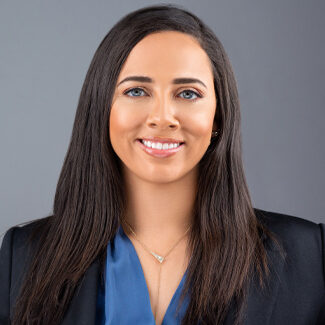Diversity Conference Awards Winners Q&A
Question 1
In the 2020 NALP Diversity Report, authors wrote that “[i]n 2020, women, people of color, and women of color all made small improvements in representation at the partner level, and Black partners overall finally surpassed 2% for the first time since NALP began collecting this data. Despite these increases, however, less than four percent of all partners are women of color — a figure that remains abysmally low due to the significant underrepresentation of both women and people of color at the partnership level and a pattern that holds true across all firm sizes and most jurisdictions.
Why do you think it has been so difficult for the legal profession to achieve truly meaningful inclusion for women and/or minorities, especially Black and Latinx populations, despite ongoing efforts over the past decade?
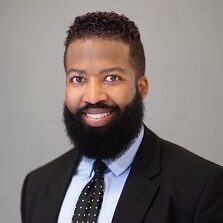
Terrance J. Evans
Duane Morris
I
am not surprised by the findings of the 2020 NALP Diversity Report. To fully understand how we got here, it is important to look at our history. Our country, which I love dearly, and our legal system was built on systemic racism. Beginning with the enslavement of Black people—who under Article 1, Section 2, Clause 3 of the U.S. Constitution were only considered to be three-fifths human—and continuing with decades of Jim Crow laws and racist massacres that terrorized people of color and prohibited their full participation in our democracy.
For example, between 1850 and 1947 there were laws enacted in California and most other states that: Bared non-whites from testifying in any case where a white person was a party; Bared non-whites from serving on a jury; Bared non-whites from voting; Bared non-whites from holding elective office; Bared non-whites from serving as judges; Barred non-white attorneys from questioning white witnesses; Barred non-whites from public schools; Bared non-whites from buying/renting property; Bared non-whites from being buried in certain cemeteries; Bared non-whites from hospitals, restaurants, hotels, theaters, pools, and beaches; Denied non-whites admission to bar associations; Barred non-whites from public transportation; Denied non-whites equal pay for equal work; Prohibited whites from marrying non-whites (Miscegenation).
Additionally, Blacks and other people of color were specifically excluded from federal wealth building programs that helped many White people in this country build generational wealth. For example, Black people were forced to provide hundreds of years of free labor to build this country and never received reparations. Yet, White former slave owners received reparations from the federal government following slavery. The federal programs that excluded people of color—who ironically paid taxes to fund these programs that built generational White wealth—include the 1862 Homestead Act, the G.I. Bill following World War II, and Social Security.
As of December 1, 2021, 28 states have enacted laws banning any discussion of the history that I just articulated in the three paragraphs above in public schools. In this environment, it is not surprising at all that the legal profession has only made modest progress in increasing the representation of underrepresented Black and Latinx/Hispanic people. We have a long way to go, but I remain optimistic that we can get there.
T
he 2020 NALP Diversity Report makes clear that the violent deaths of George Floyd, Breonna Taylor, Ahmaud Arbery, the brutal attacks on Asian Americans, as well the deep-seated social unrest that followed, forced the United States to confront the structural and systemic racism throughout our society. The legal profession was not immune. Intense scrutiny of the lack of meaningful progress in achieving greater diversity, equity, and inclusion (DE&I) in law firms and the legal profession largely followed. In spite of these considerable efforts by the legal community to make progress, bias in the profession maintains inequities long past when many other professions, most notably medicine, have become more diverse. That’s why NALP conducts these studies and provides statistics and research highlighting these persistent inequalities.
The omnipresent challenges in the legal profession regarding achievement of truly meaningful inclusion for women and minorities, especially African American and Latinx populations, are multifaceted. The most widely discussed issues are lack of mentorship and sponsorship; daily microaggressions; inequities in hiring, performance evaluations, pay, and promotions; disparate distribution of credit, work, and opportunities; work-life-balance; family obligations; and lifestyle choices. Yet to be seen is how “The Great Resignation” will impact DE&I efforts and the retention of diverse attorneys.
Despite the myriad of challenges and their glacial pace—progress is happening. Law firms and companies that continue to invest in diversity in ways that are holistic, strategic, and systematic, will continue to see a workforce that more accurately reflects society and continues to benefit their business.
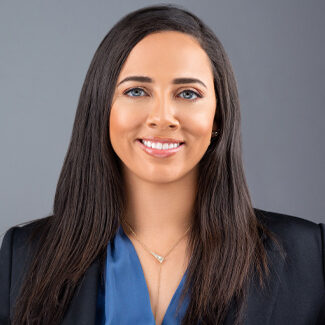
Chambord Benton-Hayes
Benton Employment Law Group
Question 2
What suggestions for improvement do you think work and move beyond performative diversity?
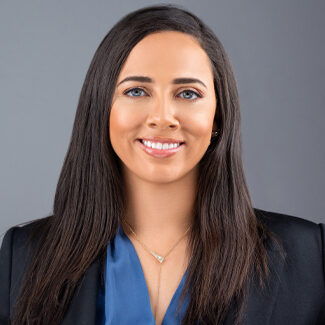
Chambord Benton-Hayes
Benton Employment Law Group
L
aw firms and companies that successfully implement DE&I practices hire and retain diverse attorneys. These companies are often led by innovative and well-trained diversity officers. A few salient examples are:
1) Robust Mentorship and Sponsorship Programs – These programs are spearheaded by attorneys committed to DE&I. Attorneys are often matched with mentors from the same racial or ethnic background. Within mentorship programs, there are also benefits to creating allies with differences including race, gender, disability, LGBTQ+ status, or regional location. Whereas a sponsor is an advocate with power and influence to support an attorney’s career advancement, both mentors and sponsors help recruit and retain intersectional attorneys.
2) Implicit Bias and Microaggressions Training (At All Levels) – Training creates a more informed and hopefully, more inclusive workplace. All individuals have bias based upon their life experiences, which may impact their treatment of others in the workplace. Effective training can reduce the likelihood that such biases will impact individuals’ decisions and daily interactions with their colleagues, as well as their hiring, promoting, and firing practices. This training is often overlooked, and attorneys are promoted based upon business development rather than adequate management experience.
3) 360 Degree Performance Reviews – This is a more holistic approach to performance evaluations that solicits feedback about an individual from all directions—their managers, coworkers, and direct reports. 360 Degree Performance Reviews also provide actionable feedback to an attorney and gives them a better understanding of their contributions to an organization. The intent is to address some of the systemic issues of pay, promotion, and discipline, and support transparency and equity within performance reviews.
4) Executive Coaches – Executive coaches are a long-term investment in an attorney’s career and professional development. Coaching focuses on shifting an attorney to a leadership, management, or executive mindset. This can translate into daily activities including time management, and business development. It is also a safe and confidential environment in which an intersectional attorney may discuss challenges within the workplace, practice new skills, and contemplate the necessary steps to achieve career progression.
In contrast, performative diversity verbally promotes DE&I change without producing change—which is inequitable and demoralizing. True allyship requires a company’s or law firm’s actions match their ideals.
L
earn about the history of oppression and discrimination against underrepresented groups. Instead of banning discussions about the history of systemic racism—like 28 states have done—we should encourage people to have open and honest discussions about our history. Additionally, we need to learn about the contributions of women and people of color to our history. Miseducating our community is not the answer.
Acknowledge that everyone has implicit bias, even members of underrepresented groups have implicit bias. Implicit bias is not something that we should fear. Instead, we should acknowledge that we all have implicit biases, and work together to deal with our implicit biases constructively. This is something that the Charles Houston Bar Association, CLA Racial Justice Committee, Region 9 of the National Bar Association, and other groups encourage.
Take affirmative steps to check your implicit bias. The best way to check implicit bias is to get training from professionals with experience in this area. I have personally provided more than 100 diversity and inclusion trainings to other lawyers, judges, students, business leaders, and government officials during my career. Duane Morris LLP has a diversity consulting practice where we help people throughout the United States navigate these sensitive issues. If you need assistance navigating issues of implicit bias, diversity, equity, inclusion, racism, sexism, homophobia, transphobia, etc. please give me a call at 415-957-3130 or email me at tjevans@duanemorris.com I am happy to help you and your team.
Invite input from underrepresented groups. It is critically important to hear from underrepresented groups directly about their experiences. Underrepresented groups need to be part of the discussion, and need to be in the room when decisions are made about them. No one should presume to understand what is best for an underrepresented group without speaking to that group directly. At the same time, it is important to remember that simply because someone is from a particular underrepresented group, it does not mean that they speak for everyone from that underrepresented group.
Keep working at overcoming your implicit biases every day. It is a lifelong commitment.
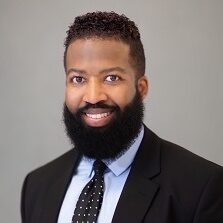
Terrance J. Evans
Duane Morris
Question 3
What are you doing in your own lives to effectuate change in this regard?
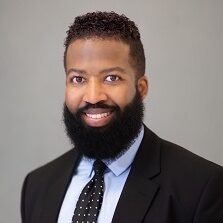
Terrance J. Evans
Duane Morris
I have dedicated my life fighting for diversity, inclusion, equity, civil rights, and justice for all. For more than 20 years, I have been a tireless fighter for justice. Most recently, in 2020, following the death of George Floyd, Evans joined forces with Adrieannette Ciccone, Leif Dautch, Marjaneh Maroufi, and Ellen Miller to create the CLA Racial Justice Committee (“RJC”). With support from former CLA, CEO and Executive Director, Ona Alston Dosunmu, the RJC has become a statewide umbrella organization addressing issues of racial justice, diversity and inclusion, and civil rights.
Between 2020 and 2021 alone, I have spoken at more than 80 diversity and inclusion and civil rights events in partnership with the following organizations:
- California Lawyers Association
- Litigation Section of the California Lawyers Association
- California Lawyers Association, Racial Justice Committee
- Minority Corporate Counsel Association
- Charles Houston Bar Association
- Asian Pacific American Bar Association of Northern California
- State Bar of California
- National Bar Association
- Filipino Bar Association of Northern California
- Korean American Bar Association of Northern California
- Vietnamese American Bar Association of Northern California
- Bar Association of San Francisco
- Chinese American Lawyers of the Bay Area
- Alameda County Bar Association
- John M. Langston Bar Association
- American Bar Association Insurance Coverage Litigation Committee
- California Law Pathways
- University of San Francisco Law School
- Loyola Law School
- Cornell Black Lawyers Alumni Network
- Bay Area Lawyers of Individual Freedom
- Minority Bar Coalition
I also authorized and published a column in the first ever Special Racial Justice Issue of California Litigation; the most widely circulated litigation publication in California. Additionally, the RJC successfully lobbied the California Legislature and California Governor Gavin Newsom to get three civil rights bills signed into law in 2020: AB 1506 (Officer-involved shootings); AB 3070 (Jury selection); and AB 3121 (Reparations).
As the incoming President of the Charles Houston Bar Association, the oldest Black bar association in California, and Deputy Director of Region 9 of the National Bar Association, I pledge to continue my fight for diversity, inclusion, equity, civil rights, and justice for all. I am grateful for the support of my firm, Duane Morris LLP, as I move forward in this endeavor.
P
ersonally, I implement a holistic approach to diversity in my legal career, community, and personal life. I am the beneficiary of a steadfast commitment to DE&I by educational institutions, law firms, and legal organizations such as BASF. I am committed to furthering diversity so that, hopefully, ten years from now we are not having the same discussion about the lack of DE&I within the legal profession.
I am the 2020–2021, President of Black Women Lawyers Association of Northern California (BWLNC). BWLNC’s membership is comprised of senior level executives and in-house attorneys, law firm partners, associates, solo practitioners, public interest and public sector attorneys, distinguished judges and professors, and law students. BWLNC members contribute to and create opportunities for African American across the legal industry (including aspiring attorneys). We also partner with other organizations committed to supporting and achieving greater diversity. BWLNC is both a catalyst for change for African American women in the legal profession and a safe space for African American women to thrive.
Separately, I mentor a number of high school, college, and law school students. This pipeline is critical because the investment in diverse future attorneys must start long before they pass the bar. Professionally, I provide employer trainings on various topics including the Americans with Disabilities Act and harassment prevention to support more inclusive work environments and compliance with the law.
Finally, I am a 2007-2010 BASF Diversity Scholarship Recipient. This program helped me pay for law school. It also inspired me to serve currently on BASF’s Solo Practitioner and Small Firm Committee.
